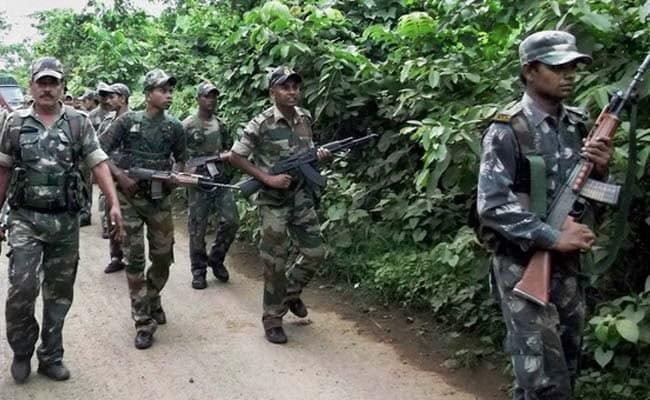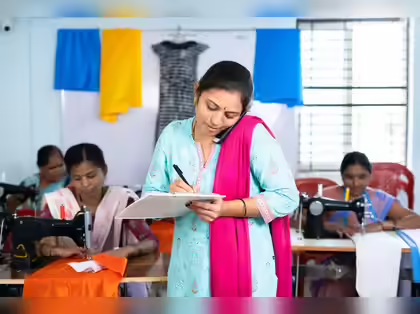- Courses
- GS Full Course 1 Year
- GS Full Course 2 Year
- GS Full Course 3 Year
- GS Full Course Till Selection
- Answer Alpha: Mains 2025 Mentorship
- MEP (Mains Enrichment Programme) Data, Facts
- Essay Target – 150+ Marks
- Online Program
- GS Recorded Course
- Polity
- Geography
- Economy
- Ancient, Medieval and Art & Culture AMAC
- Modern India, Post Independence & World History
- Environment
- Governance
- Science & Technology
- International Relations and Internal Security
- Disaster Management
- Ethics
- NCERT Current Affairs
- Indian Society and Social Issue
- NCERT- Science and Technology
- NCERT - Geography
- NCERT - Ancient History
- NCERT- World History
- NCERT Modern History
- NCERT Medieval History
- CSAT
- 5 LAYERED ARJUNA Mentorship
- Public Administration Optional
- ABOUT US
- OUR TOPPERS
- TEST SERIES
- FREE STUDY MATERIAL
- VIDEOS
- CONTACT US
Fighting Maoism with Mobile Towers
Fighting Maoism with Mobile Towers

Why in the News
- The Bijapur district in Chhattisgarh, one of India's worst Maoist-hit areas, is witnessing increased mobile tower installations to improve connectivity.
- This infrastructure push is part of broader efforts to bring remote and conflict-affected areas closer to the national mainstream.
- A sharp rise in anti-Maoist operations since 2024 has also facilitated development efforts.
Key Highlights
- Background of Bijapur
- Part of the Bastar region in Chhattisgarh, which includes seven districts:
Bastar, Kanker, Kondagaon, Narayanpur, Dantewada, Bijapur, and Sukma. - Among these, Bijapur is considered the worst-affected by Left-Wing Extremism (LWE), making development efforts especially challenging.
- Part of the Bastar region in Chhattisgarh, which includes seven districts:
- Mobile Connectivity Expansion
- 48 towers installed between January 2024–June 2025.
- Covers 110 villages, compared to 24 towers in 2022 and 2023 combined.
- 20 new towers set up in 2 years despite threats and sabotage.
- Security Situation and Operations
- Anti-Maoist operations stepped up: 88 encounters in Bijapur from Jan 2024–June 2025.
- 184 Maoists killed and 771 arrested.
- 732 IDs seized, 429 weapons recovered.
- Impact on Villages
- 45% of villages in Bijapur now have mobile network coverage.
- Access to digital services, financial inclusion, emergency response improving.
- Ground-Level Realities
- Security threats persist; mobile towers are often targeted by Maoists.
- Officials, security personnel, and civilians still face regular attacks.
Left Wing Extremism (LWE)
|
Impact on India
- Strengthening Internal Security
- Improved surveillance and communication for security forces.
- Easier coordination in anti-Maoist operations.
- Boosting Development in LWE Areas
- Access to government schemes and services through digital connectivity.
- Encourages migration toward mainstream economic activities.
- Enabling Financial and Digital Inclusion
- Mobile towers allow banking, payments, and DBT (Direct Benefit Transfer).
- Helps integrate tribal and remote communities into the digital economy.
- Bridging Governance Gaps
- Better delivery of education, health, and emergency services.
- Empowers local administration with tools for outreach.
- National Integration and Peacebuilding
- It helps people choose peace and better opportunities instead of joining Maoist groups.
- Supports long-term peace and stability in insurgency-prone regions.
Challenges and Way Forward
|
Challenge |
Way Forward |
|
Terrain and Infrastructure: Dense forests, lack of roads hinder tower installation |
Use of satellite-based or solar-powered mobile towers |
|
Security Threats: Maoists sabotage or destroy towers, attack personnel |
Increase deployment around towers; tech-based surveillance |
|
Lack of Skilled Manpower: Difficult to find technicians willing to work in remote, dangerous areas |
Train local youth for maintenance roles |
|
Sabotage and Vandalism: Past towers have been deliberately damaged |
Community involvement to protect assets |
|
Network Reliability: Connectivity still patchy in many areas |
Use hybrid models (fiber + satellite + wireless) for resilience |
Conclusion
The ongoing transformation in Bijapur represents a significant step in India's efforts to integrate conflict-affected areas into the development fold. Despite harsh terrain, persistent Maoist threats, and logistical challenges, the expansion of mobile connectivity is enabling digital access, security coordination, financial inclusion, and essential services. It reflects a model of “development as counter-insurgency” and highlights how infrastructure can become a vehicle of peace and empowerment. The smiles of villagers gaining mobile access for the first time underscore the deeper impact of such state-led initiatives.
|
Ensure IAS Mains Question Q. "Development is the most effective counter-insurgency strategy." In the context of Left-Wing Extremism in India, critically examine how infrastructure development—particularly digital and mobile connectivity—influences security and governance outcomes. (10 marks) |
|
Ensure IAS Prelims Question Q. With reference to recent developments in Left-Wing Extremism (LWE)-affected districts, consider the following statements:
Which of the statements given above is/are correct?
Answer: c Explanation Statement 1 is correct: Bijapur is one of the seven districts in the Bastar region of Chhattisgarh and is widely recognised as one of the worst-affected areas by Maoist (LWE) violence. It has seen some of the highest numbers of encounters and arrests in recent years. Statement 2 is incorrect: Between January 2024 and June 2025, only 48 mobile towers were installed in Bijapur. This is a significant increase from previous years but does not exceed 100 as claimed in the statement. Statement 3 is correct: Increased mobile connectivity in LWE areas like Bijapur has enabled better communication for security forces, improved access to government schemes via Direct Benefit Transfer (DBT), and helped bridge governance gaps through digital services like banking, education, and emergency response. |




